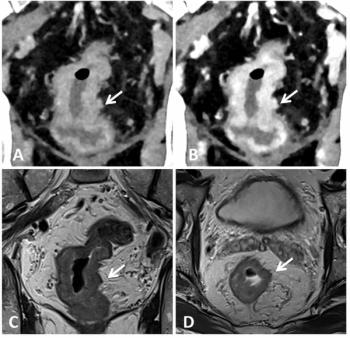
Report from NASCI: Cardiovascular MRA applications without contrast media address NSF fears
Optimized high-field MR angiography sequences that eliminate the need for contrast agents could replace conventional contrast-enhanced MRA for evaluation of major arteries and veins of the thoracic region, according to two studies presented Oct. 6 at the 2007 North American Society for Cardiac Imaging meeting in Washington, DC.
Optimized high-field MR angiography sequences that eliminate the need for contrast agents could replace conventional contrast-enhanced MRA for evaluation of major arteries and veins of the thoracic region, according to two studies presented Oct. 6 at the 2007 North American Society for Cardiac Imaging meeting in Washington, DC.
Noncontrast MRA may provide an alternative imaging approach for patients who risk developing nephrogenic systemic fibrosis and other contrast-related complications, said coauthor Dr. Anderanik Tomasian, a radiologist at the University of California, Los Angeles. Tomasian presented the data in a plenary session and at NASCI's scientific poster competition.
Tomasian and colleagues enrolled 30 consecutive patients with known or suspected thoracic aortic disease. These patients underwent free-breathing ECG-gated steady-state free precession (SSFP) noncontrast MRA and high-resolution 3D contrast-enhanced MRA of the thorax.
The investigators read the enhanced and unenhanced MRA data to check for pathology and to evaluate image quality from four aortic segments (root, arch, ascending and descending aorta) obtained at 1.5T. They found that noncontrast MRA with SSFP provided sufficient vascular delineation and signal-to-noise ratios to support the diagnosis of thoracic aortic disease.
Two readers diagnosed aneurysms of the ascending aorta in 12 patients using noncontrast SSFP MRA. They also confirmed root dilatation and coarctation in seven and three patients, respectively. The unenhanced MRA data also helped the diagnosis of one patient with mural thrombosis of the aortic arch and three patients with aortic dissection. Total scanning time with this sequence ranged from five to 10 minutes.
The investigators found that the noncontrast MRA approach provided higher SNR than contrast-enhanced MRA in all aortic segments. As a result, there was no significant difference between readers in their ability to visualize ascending/descending aorta, the aortic arch, or the motion artifacts affecting these vessels. The noncontrast MRA sequence afforded a higher visibility of the aortic root compared to the other aortic segments. The difference was statistically significant (p
The UCLA team assessed the feasibility of the noncontrast MRA technique in another paper focused on the central chest veins of the same set of 30 patients with known or suspected cardiovascular disease of the thorax. Researchers evaluated noncontrast SSFP scans of eight venous segments and artifacts and compared their results with conventional contrast-enhanced MR.
Two readers successfully evaluated 240 venous segments from both noncontrast and contrast-enhanced data sets. They correctly diagnosed dilatation/thrombosis and coronary sinus drainages of the superior vena cava in one and five patients, respectively. They also confirmed the patency of pulmonary artery and inferior vena cava shunts in five patients.
Again, the investigators found no statistically significant difference between readers in their ability to visualize all venous segments using contrast or noncontrast MRA.
"Noncontrast SSFP MRA provides sufficient vascular visibility to support confident diagnosis. This emerging technique appears to be valuable in the morphological evaluation of central thoracic veins in various diseases, including veno-occlusive pathologies," Tomasian said.
For more information from the Diagnostic Imaging archives:
Newsletter
Stay at the forefront of radiology with the Diagnostic Imaging newsletter, delivering the latest news, clinical insights, and imaging advancements for today’s radiologists.



























